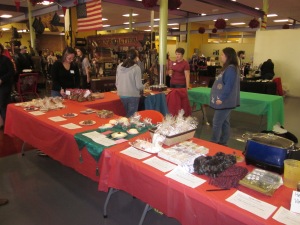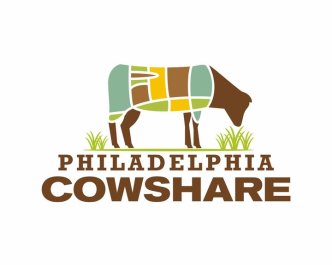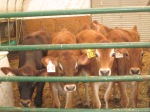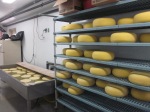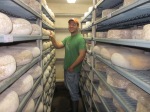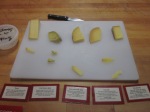On the first day of December, I ventured to the East Landis Marketplace in Vineland, where 18 South Jersey food enthusiasts gathered, their arms full of homemade baked goods, canned goods, prepared dishes, crafts and garden treasures. The home-canners, makers and bakers made their way onto the second floor of the Marketplace where they set up their wares, spooning out samples and arranging their offerings. The South Jersey Swappers holiday food swap had begun.
Over the past two years, the success of the BK Swappers in Brooklyn has drawn much online attention. As a result, similar organizations (link) have formed in urban areas throughout the country, from Pasadena to Philadelphia, but South Jersey was once again left out of this primarily urban craze. It was only earlier this year that Green Bank resident Lauren Vitagliano started her South Jersey Swappers blog, with the very first swap held in May at Vineland’s Sweet Life Bakery, a stone’s throw from the East Landis Marketplace.
Word of the new swapping initiative quickly echoed across the South Jersey blogosphere thanks to local blogs like Jennifer Malme’s Down Home South Jersey (Malme arrived at the December swap with her sweet and spicy pecans and homemade lavender soap) and even media outlets like Edible Jersey Magazine.
“I don’ t really think it’s grown too much yet; I’m still trying to find a way to get it out there more,” Vitagliano said. “But I think everyone has the love of food in common—good food at that.”
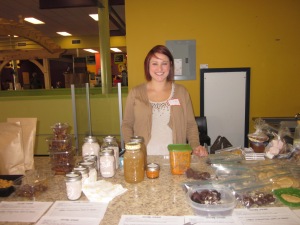
Galloway resident Abi Douglass brought nine homemade goods to the December swap, including apple cider caramel cookies and romesco sauce.
After set-up, participants were free to wander around the designated swapping space, sampling and deciding which items they would be willing to trade for. Participants signed their names on a sheet of paper placed in front of a desired item, also adding which of their items they would be willing to trade. While many of the holiday swap’s participants were first-timers, the events have attracted their share of regulars, or at least repeat-swappers. Seasoned swapper Abi Douglass, from Galloway, brought no less than nine items for the swapping, which ran the gamut from Earl Grey macarons (link) with Biscoff to turkey stock.
When the “bidding” process finally drew to a close, the actual swapping commenced. Swap time itself was a bit like the foodie equivalent of a speed-dating event, with participants scoping each other out for trades while countless mason jars and crinkle-wrapped goodies (instead of phone numbers) switched hands.
At the end of a hard day’s swapping, second-time swapper Stefanie Modri had turned her garden-fresh pumpkin curry soup, fresh dried
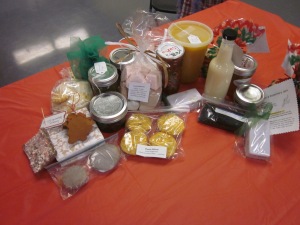
Stefanie Modri’s “loot” includes homemade limoncello, marshmallows, and cinnamon Christmas ornaments.
mint and herb vinegar into a sizable pile of loot. “The homemade marshmallows are really special, and my daughter’s really excited about the [hand-knitted] scarf she got,” Modri said, parsing through her loot. “We got some good things!”
As for me, attending but not participating at a South Jersey Swappers was tortuous! The next time a swap rolls around, I’ll be carrying more than a notebook and a camera.
